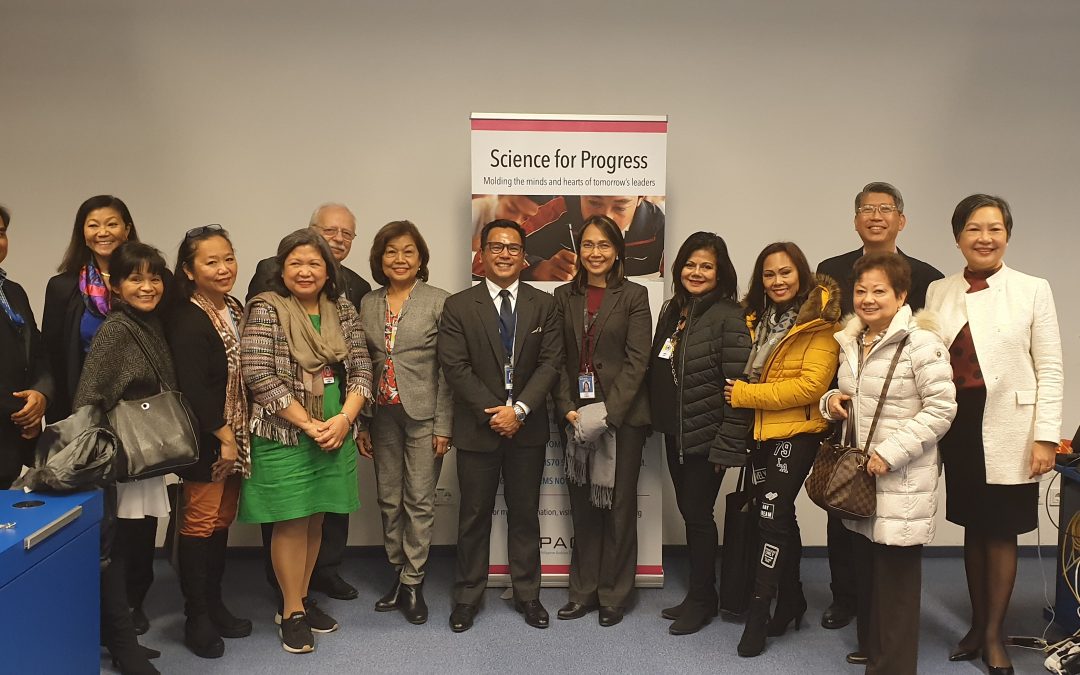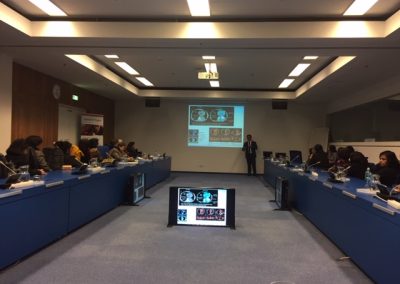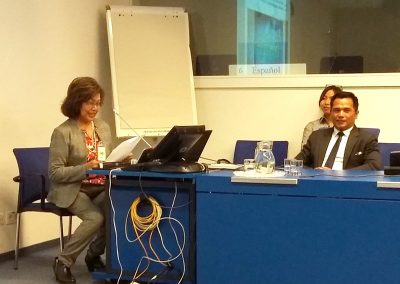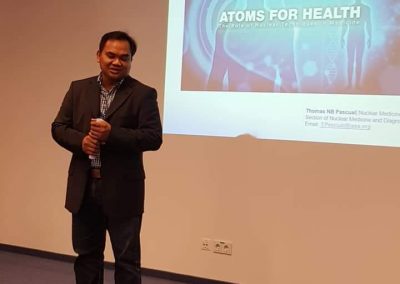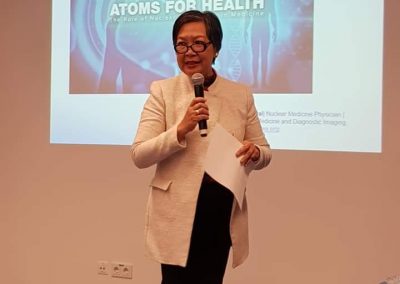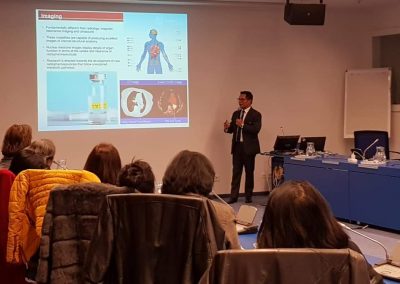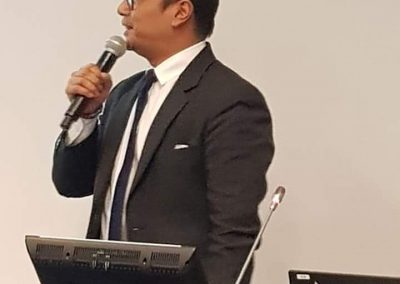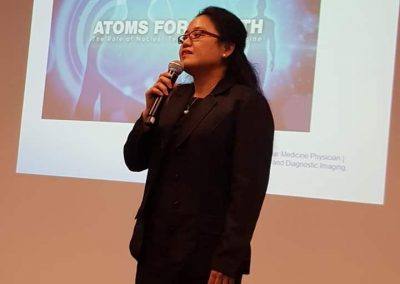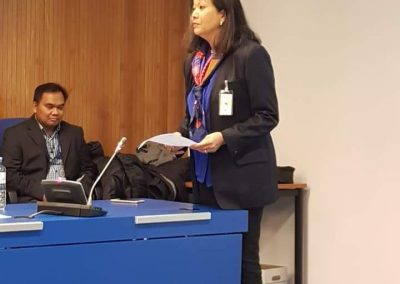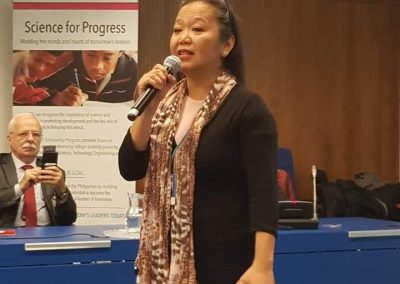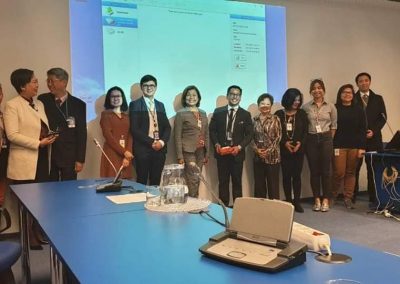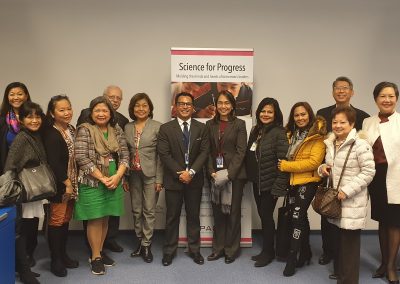The second lecture in the PACES series saw Dr. Thomas Pascual, a nuclear medicine physician and professional staff at the International Atomic Energy Agency (IAEA), deliver a stimulating talk on “Seeing beyond the surface — Nuclear medicine in detecting and treating cancer and other conditions.” Before a rapt audience of more than 50 people from the Vienna International Centre, members of Philippine organizations, staff of the Philippine Embassy in Vienna and members of the co-organizers PACES and the VIC Club Filipino (VICCF), Dr. Pascual provided insights on how nuclear techniques are used in the diagnosis and treatment of diseases, and what the IAEA is doing to assist its Member States.
Dr. Thomas Pascual is a nuclear medicine physician with special interest and expertise in Pediatric Nuclear Medicine and PET/CT, Quality Management Systems in Nuclear Medicine, Health Professions Education and project management and capacity building. He trained in Nuclear Medicine at the University of Santo Tomas in the Philippines, obtaining both an M.D. and a Master’s Degree in Health Professions Educations (M.H.P.Ed). He underwent fellowship training at the Children’s Hospital at Westmead in Greater Sydney, N.S.W. Australia. Since 2007, he has been the Executive Director of the Asian School of Nuclear Medicine (ASNM), the educational arm of the Asian Regional Cooperative Council for Nuclear Medicine (ARCCNM) responsible for identifying and liaising with national and international organizations and experts in Nuclear Medicine for capacity building initiatives in developing countries. In 2018, he was appointed as Vice-Dean of this organization which expanded to include the Asia-Oceania region.
According to Dr. Pascual, conventional medical imaging techniques, such as X-ray and MRI (magnetic resonance imaging), permit medical specialists to visualize the anatomical structure, or static form, of internal organs within the body. Injection of radioisotopes or radiotracers into the organs adds visual information about the physiological function of the organs, even at the cellular level, leading to more precise determination of the location and extent of diseases, and providing the possibility to detect the early onset of some diseases before symptoms become evident in other imaging tests. Images obtained with radiotracers can pinpoint in 3D which parts of organs are functioning or not functioning, and how well these function. An example of this method is PET/CT (Positron emission tomography – Computed Tomography). Dr. Pascual introduced the term “theranostics,” a new field of medicine that combines therapy and diagnostics to create personalized therapies for a patient based on specific targeted diagnostic tests. Dr. Pascual also showed how nuclear techniques are employed in screening prostate cancer in men and in differentiating forms of dementia that are made visible, from scans using radioisotopes, as different patterns of brain activity.
Dr. Pascual presented WHO statistics indicating that among the various noncommunicative diseases, the vast majority in the world are dominated by cancers and cardiovascular ailments, cancers, respiratory diseases and diabetes. According to the World Health Organization, noncommunicable diseases account for 70% of all deaths globally. Over 85% of such deaths between the ages of 30 and 69 years occur in low- and middle-income countries.
The lecture was organized by PACES in cooperation with the VIC Club Filipino led by their respective presidents Maria Lourdes Reininger and Miriam de la Cruz. The lecture opened with welcome remarks by Mrs. Reininger, and by Kim Navarro, First Vice President of VICCF. On behalf of the Philippine Embassy, First Secretary and Consul Leilani Feliciano spoke on the science diplomacy initiatives of the Embassy. Following the lecture, a question & answer session was moderated by PACES Vice President Gina Villanueva-Weinzierl. As could be expected, most questions were about cancer diseases. Marizel Rojas closed the event by thanking the guest speaker.
The PACES lecture series aims to help disseminate scientific knowledge and information in the fields of Science, Technology, Engineering and Mathematics (STEM) that are of relevance to Filipinos and Austrians in Europe. It also seeks to promote awareness and appreciation of the scientific abilities of Filipinos working outside the Philippines, and to inspire the younger generation of Filipinos towards career possibilities in the fields of STEM. (by Dr. Efren Abaya)
Dr. Thomas Pascual lecturing on “Seeing beyond the surface — Nuclear medicine in detecting and treating cancer and other conditions.”
Dr. Thomas Pascual lecturing on “Seeing beyond the surface — Nuclear medicine in detecting and treating cancer and other conditions.”
First Secretary and Consul Leilani Feliciano of the Philippine Embassy speaking about the science diplomacy initiatives of the Embassy.
Gina Villanueva-Weinzierl, PACES Vice-President for External-Affairs, moderating the lively question and answer with the audience.
